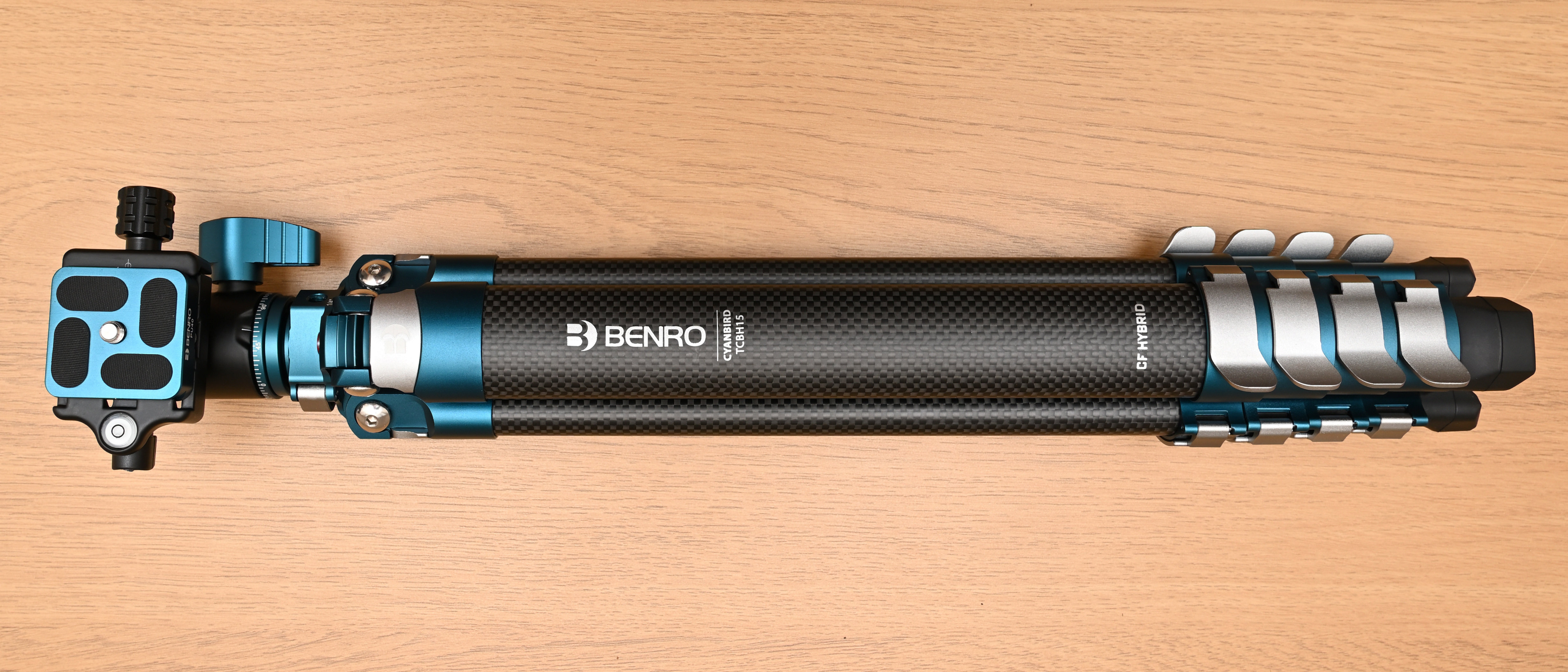Digital Camera World Verdict
Most travel tripods these days have swing-up legs so that the feet can encircle the head to reduce stowage size. The downside is that they take longer to set up for shooting and to fold down afterwards. The Benro Cyanbird takes a different approach, with arch-profile legs to ensure a snug fit with no wasted space. The hybrid design with a mix of carbon fiber and aluminum leg sections, and ocean blue magnesium alloy castings is very easy on the eye, and the 1.05kg (2.31lbs) weight is very easy on the back. Although compact and lightweight, it’s very versatile and gives sturdy support, making it a smart buy at the price.
Pros
- +
Space-saving design
- +
Lightweight but sturdy
- +
Versatile yet simple to use
Cons
- -
Typically limited maximum height
- -
No monopod configuration
- -
A bit fiddly to split the center column
Why you can trust Digital Camera World
The Benro Cyanbird takes its name from a legendary Chinese bird of prey, said to be a strong and dexterous flyer that transformed into a ‘stunning, auspicious creature’. Naturally, the Benro company itself doesn’t stretch back to Chinese mythology, but it has been making high-quality tripods since 1995.
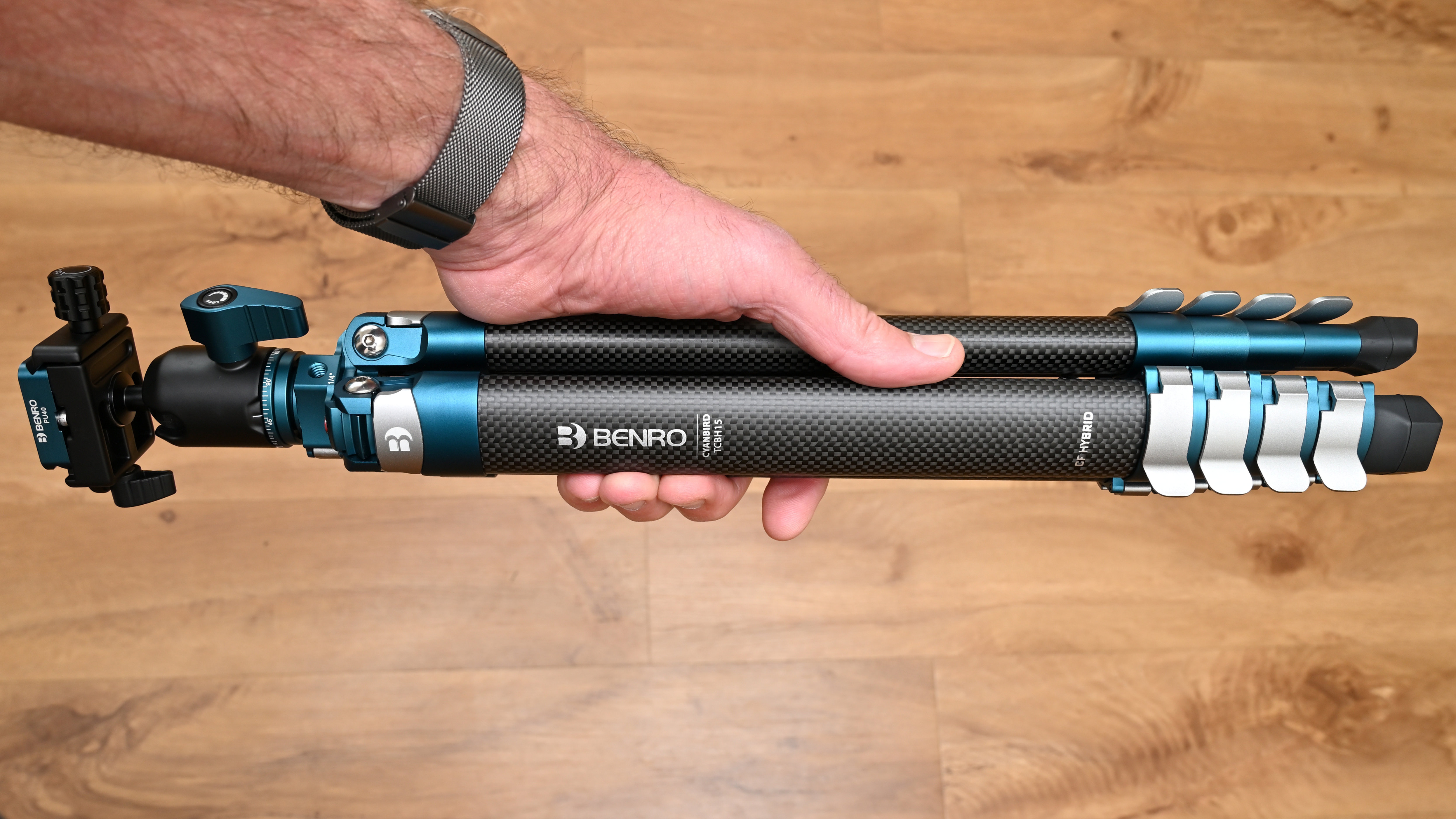
Benro makes a wide range of impressive, really sturdy, full-sized tripods. We’ve also been very impressed by some of their recent, lightweight travel tripods, including the Benro Slim Travel (FSL09CN00) and newer Benro Rhino 05C VX20. Both are carbon fiber tripod kits, the former being particularly small and very competitively priced, the Rhino being available in a range of different sizes.
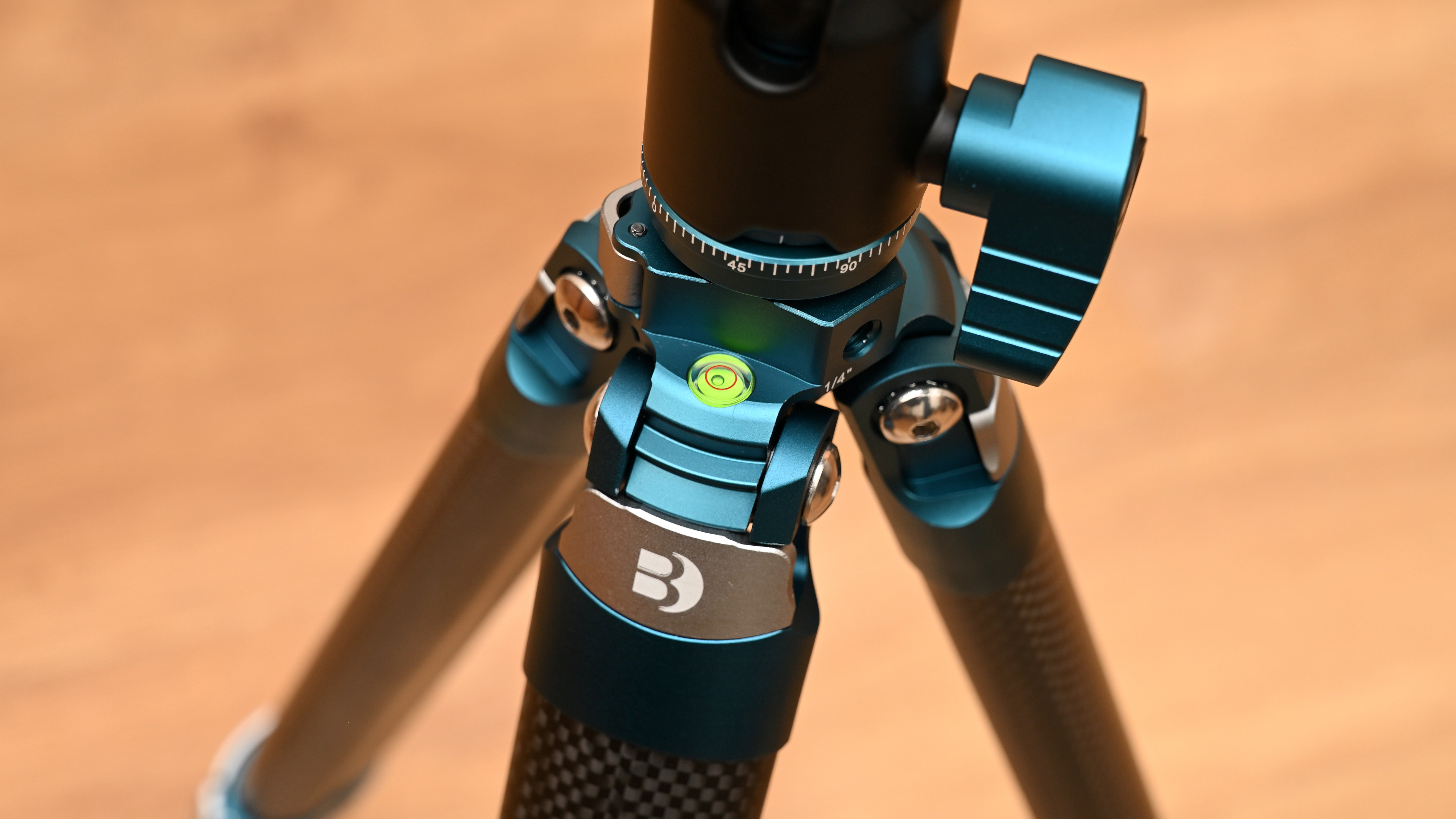
Unlike the Slim Travel and Rhino, the Cyanbird bucks the recent travel tripod trend of having swing-up legs to reduce the stowage size. Instead, its space-saving design is more like that of the Peak Design Travel Tripod, with leg sections that have an arch-profile to more snuggly wrap around the center column, which itself has a triangular profile. Currently there are three different versions. Two of them are available in either carbon fiber or aluminum and come complete with an FS20PRO 2-in-1 Pan Head. They’re a good fit if you shoot a lot of video as well as stills. We went for the ‘Hybrid’ option which has a mix of carbon fiber and aluminum leg sections, and comes with a more stills-oriented N00P ball head.

Specifications
Material: Carbon Fiber / Aluminum
Folded height: 46cm / 18.1"
Maximum operating height: 155cm / 61"
Minimum operating height: 17.7cm / 7"
Weight: 1.05kg / 2.31lbs
Load rating: 4kg / 8.82lbs
Sections per leg/centre column: 5 / 2
Maximum leg section diameter: 34.5 x 19.5mm
Locking leg angles: 3
Feet: Pads
Case/bag included: Padded soft case
Key features
All versions of the Cyanbird legs have five sections in each. Unlike the fully carbon fiber and aluminum editions, this ‘Hybrid’ version has a carbon fiber top section, while the inner four sections are made from aluminum. That’s actually a pretty good shout, as the potential weight-saving from pricier carbon fiber is fairly minimal for the inner leg sections. Indeed, the full Hybrid kit with its ball head weighs exactly the same as the carbon fiber kit with the slightly chunkier 2-in-1 pan head. We’ll come back to the ball head in ‘build and handling’.
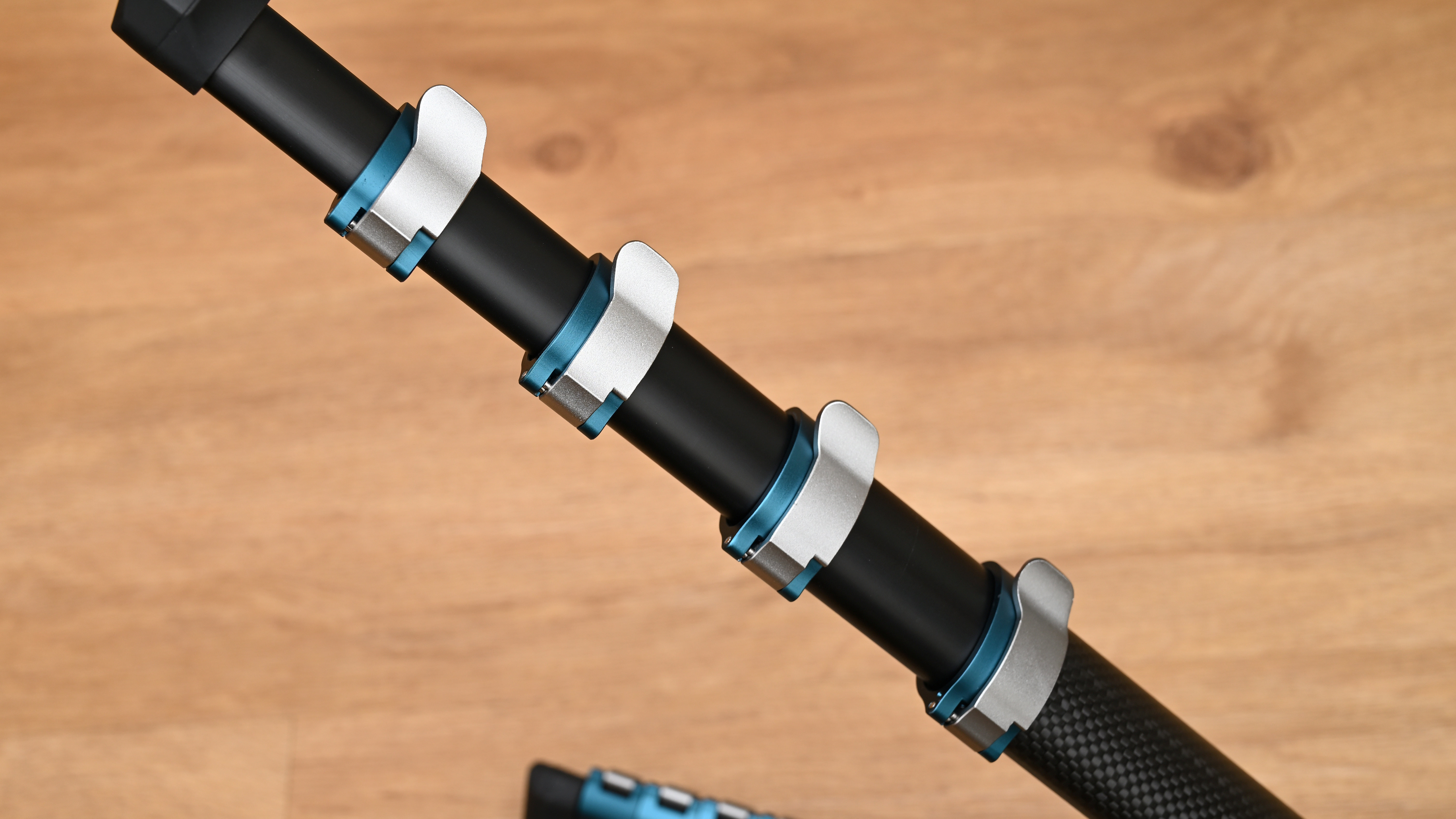
A key feature of the Cyanbird is that it has arch-profile leg sections. They’re trickier to manufacture than regular round-shaped legs but a major bonus is that they wrap tightly around the center column when you fold down the tripod, so it takes up less space. Measuring 46cm (18.1”) in length when folded, it’s a little longer than some tripods that have swing-up legs, including the Peak Design Travel Tripod and 3 Legged Thing Punks Corey 2.0, which fold down to 39cm (15.4") and 36.1cm (14.2") respectively. Even so, the Cyanbird is small enough to fit inside a photo backpack or daypack. It also comes complete with its own padded, roll-up soft case, which includes additional pockets for other gadgets.
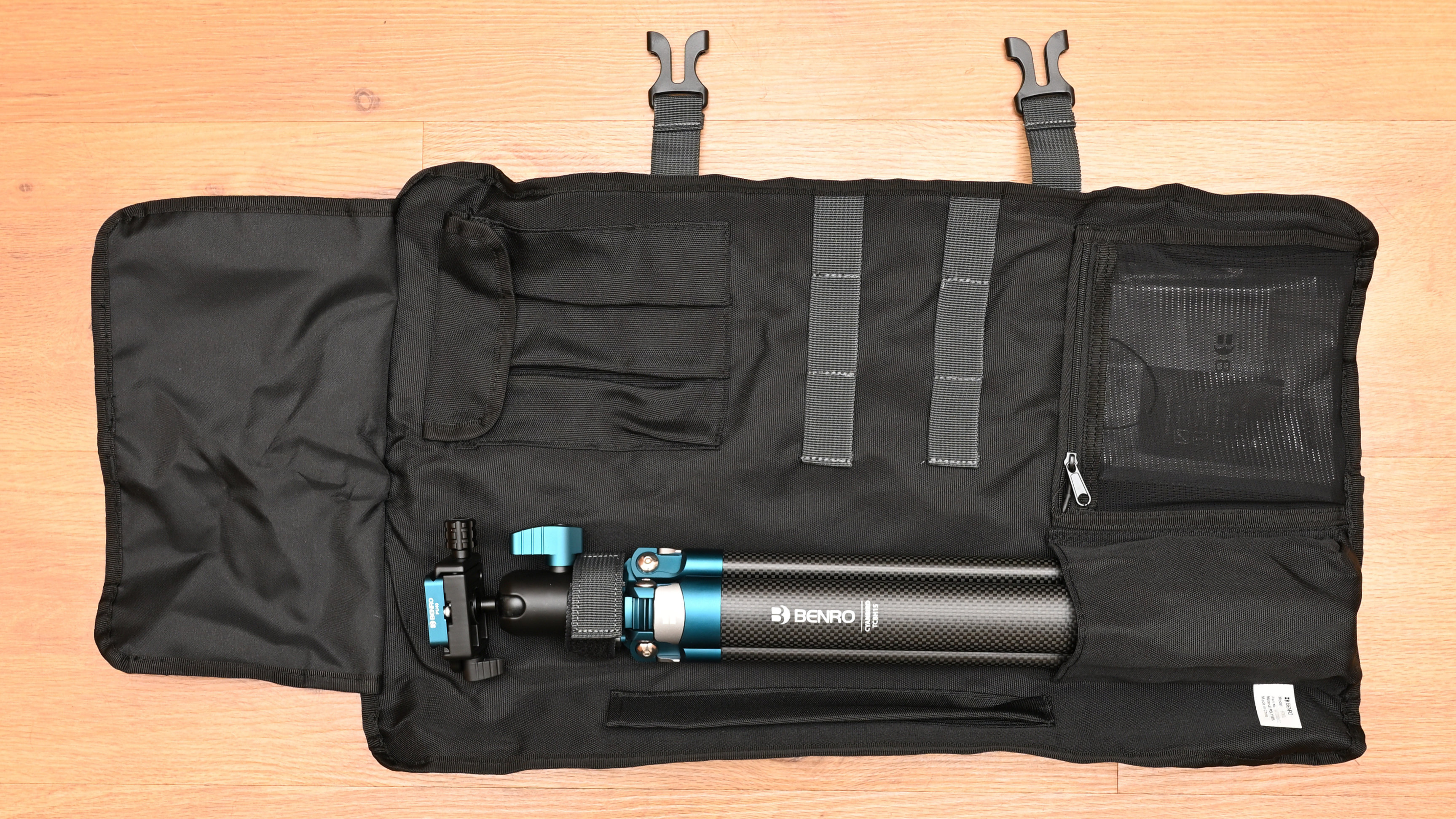
To complement the slim leg design, the clamps for each extending section have low-profile flip-locks, made from durable aluminum. To help keep the weight to a minimum while enhancing strength and stability, all major castings in the tripod are made from magnesium alloy, and they’re finished in eye-catching ocean blue. Three alternative locking leg angles are available, which is par for the course in tripod design and enable you to work around obstacles or on uneven terrain.

Build and handling
Although the Cyanbird is compact and lightweight, build quality looks and feels very good. We’d expect nothing less from Benro, based on our experience of their tripods over the years. Despite having five sections in each leg, the tripod is quick and easy to set up – more so than with travel tripods that have swing-up legs.
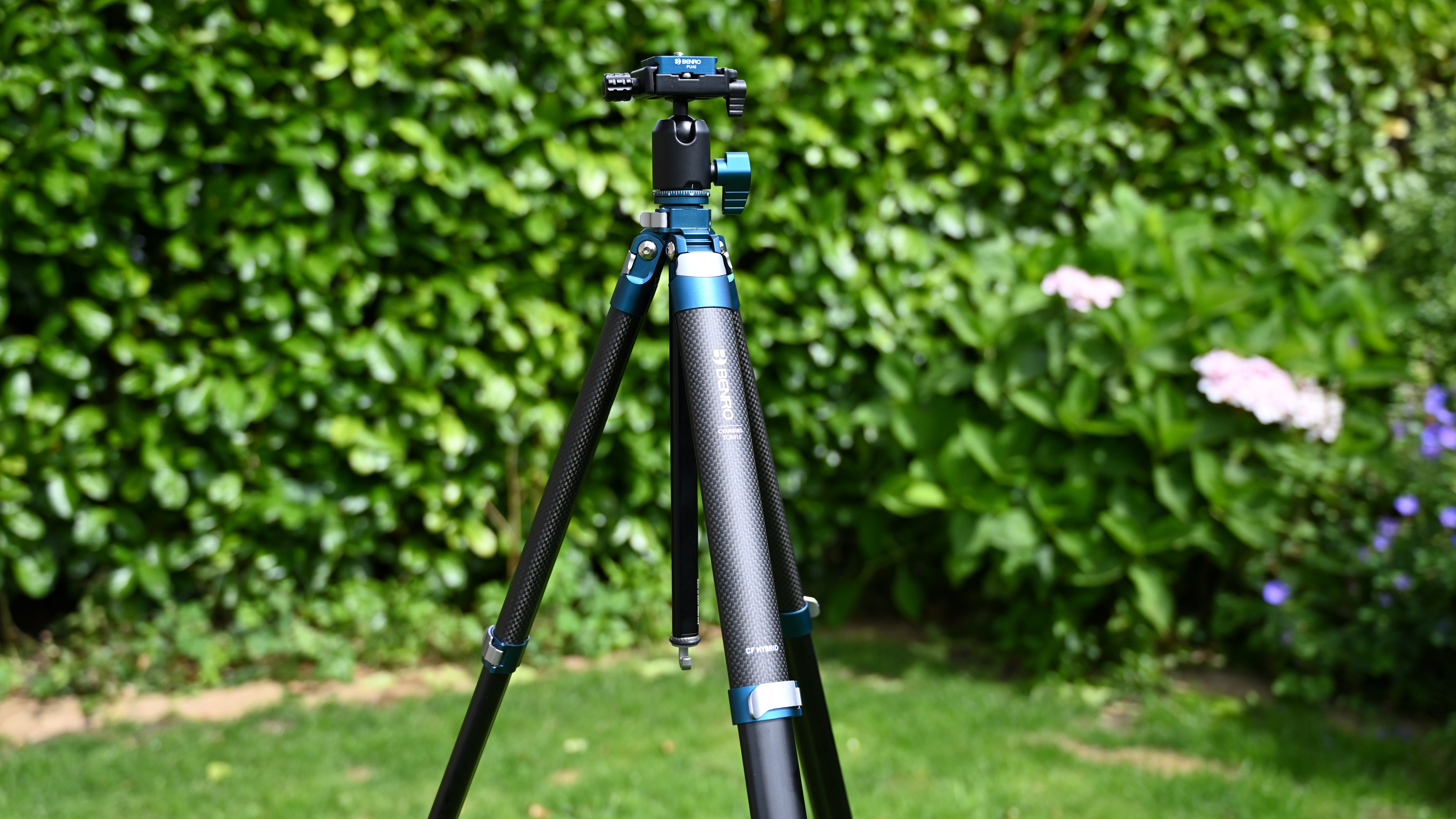
Some travel tripods have a two-section center column, which can telescope upwards to extend the maximum operating height without impacting on compactness for storage. That’s not the case here, but the center column is nevertheless a two-section item, as you can remove the lower section to enable really low-level shooting with the legs at their widest angle, right down to 17.7cm (7"). To split the center column for low-level shooting, you need to unscrew the weight hook at the bottom, which reveals an Allen key for removing the locking screw. An additional Allen key is supplied in the detachable pan handle of the alternative FS20PRO pan head. After that, you unscrew the head and use the Allen key to release the lower part of the center column. It’s a bit fiddly but works effectively.
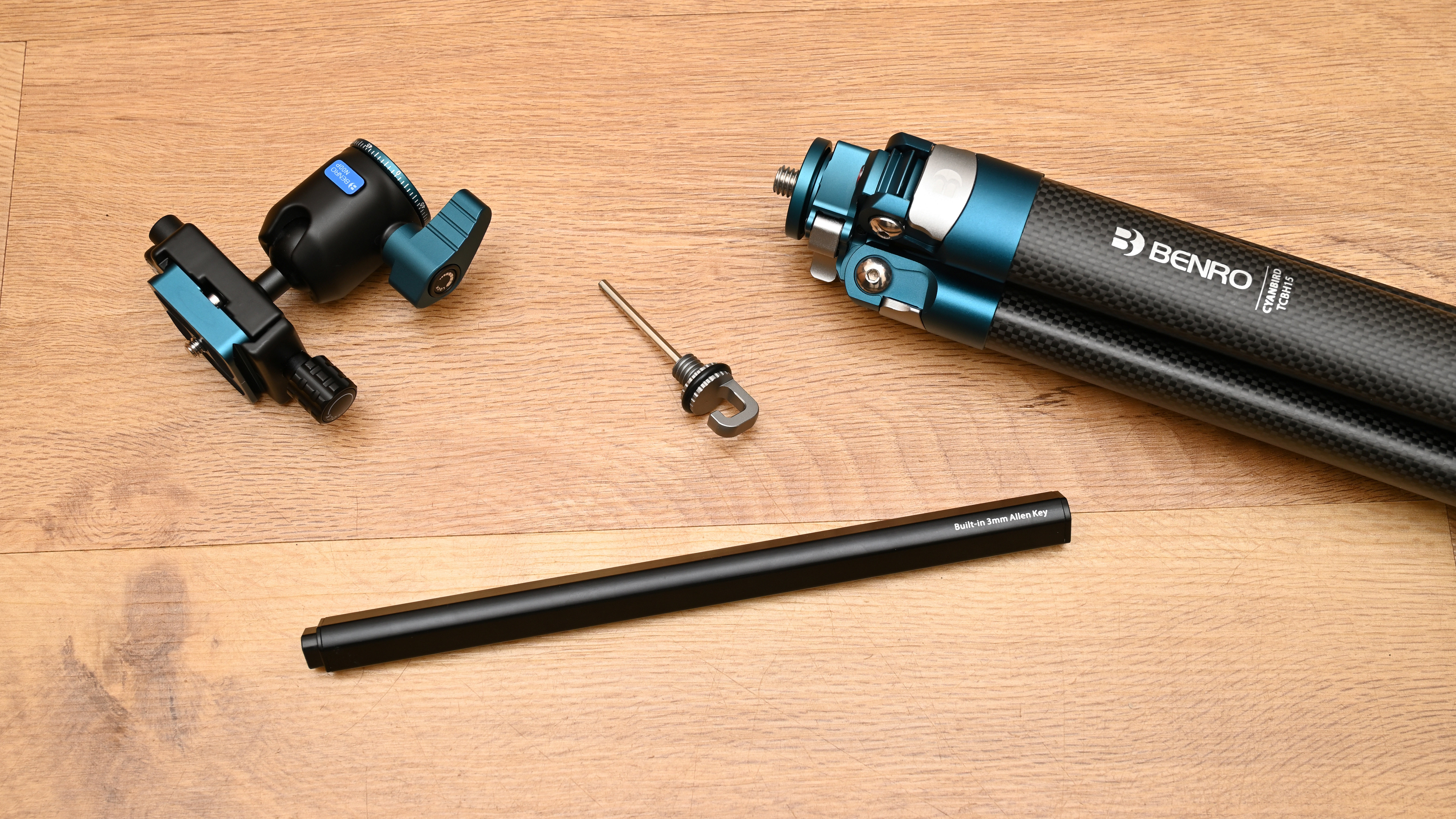
Getting back to the N00P ball head supplied with the Hybrid kit that we’re testing, it has a single locking lever for general adjustments, and comes with a 4cm long Arca-Swiss quick-release plate. The locking knob and quick-release plate are again finished in ocean blue, to match the castings on the tripod legs. Although it’s a ball head rather than a pan head, it’s still fairly video-friendly, as it has a separate pan-only release and features a bubble level for quick and easy levelling.
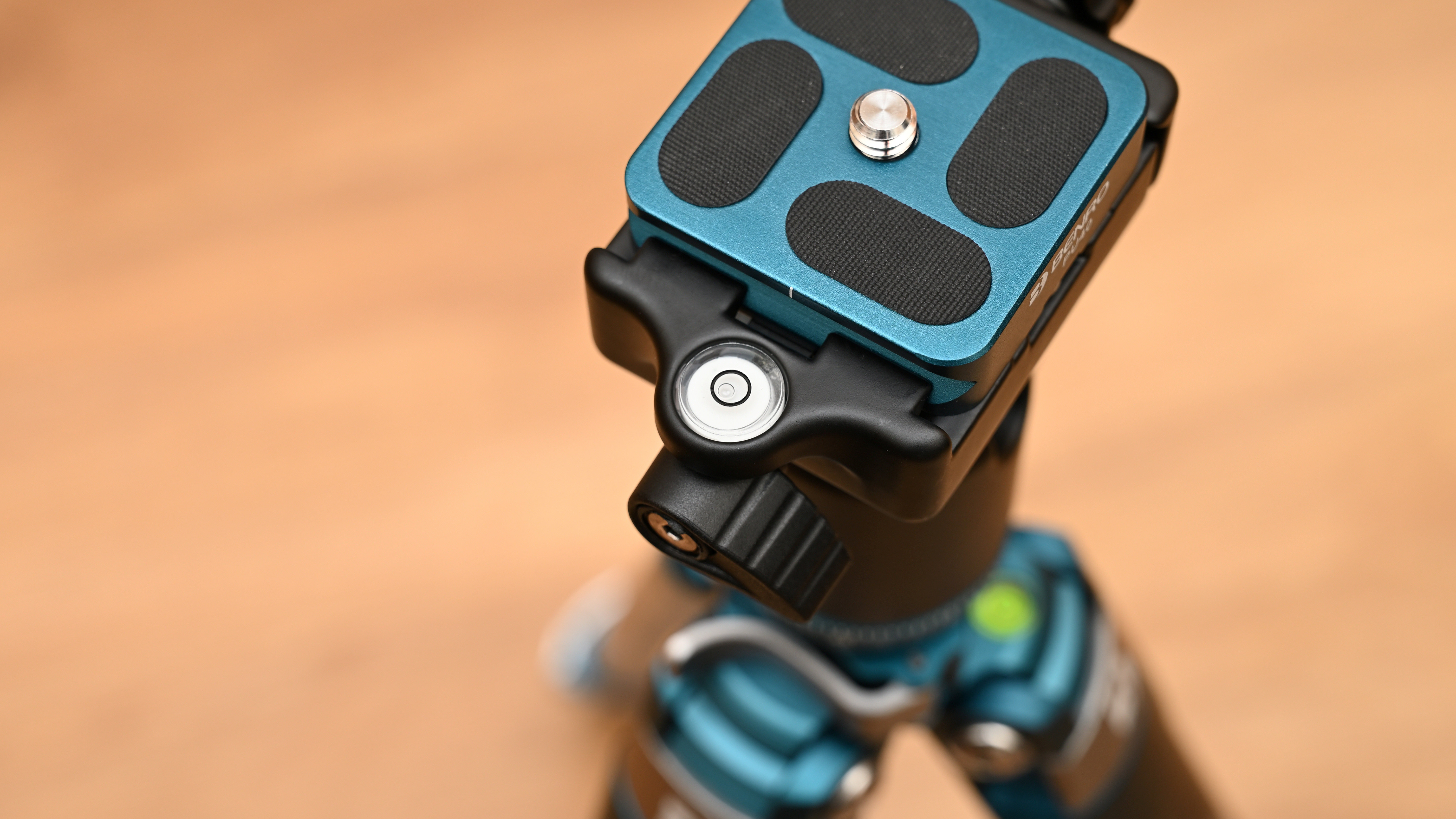
Up top, there are three additional sockets with standard ¼”-20 threads for attaching optional accessories like arms for holding a microphone or LED panel. One of these is built into the center column. Down at the bottom, the legs have rubber pads designed to give a sturdy footing on any surface.
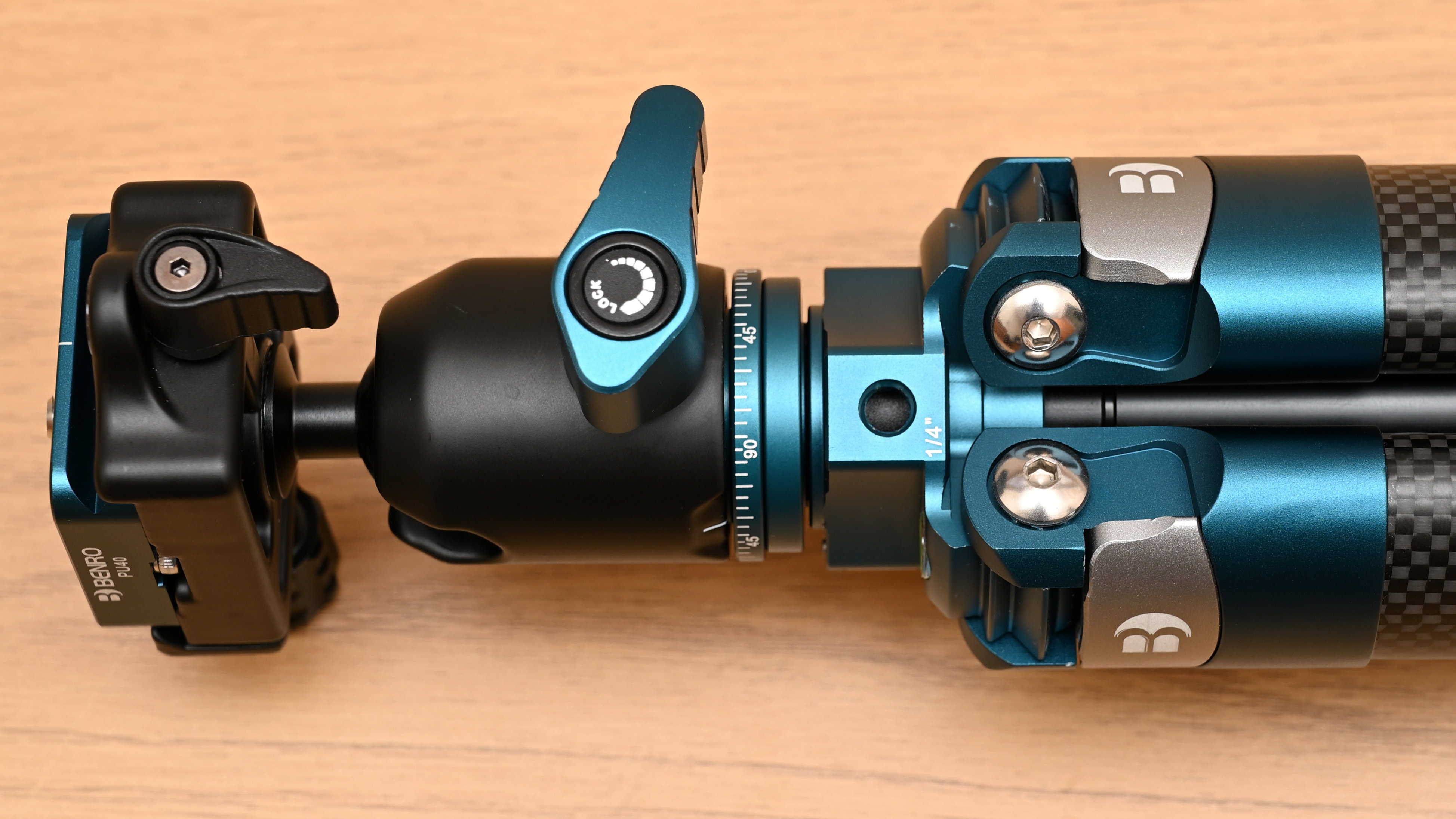
Performance
You’d be forgiven for thinking that a tripod weighing just a kilogram or a couple of pounds would be a flimsy affair, prone to swaying around in the slightest breeze at its maximum operating height. Sure, the maximum load rating is only about half that of the Peak Design Travel Tripod and little more than a third of the 3 Legged Thing Punks Corey 2.0, but the Benro holds its own very well. The 4kg (8.82lbs) load rating is certainly beefy enough to cope with the vast majority of camera and lens combinations and, in our tests, it proved reassuringly rigid when supporting full-frame cameras and chunky telephoto lenses. Adding a bit of ballast to the weight hook can further enhance overall stability.
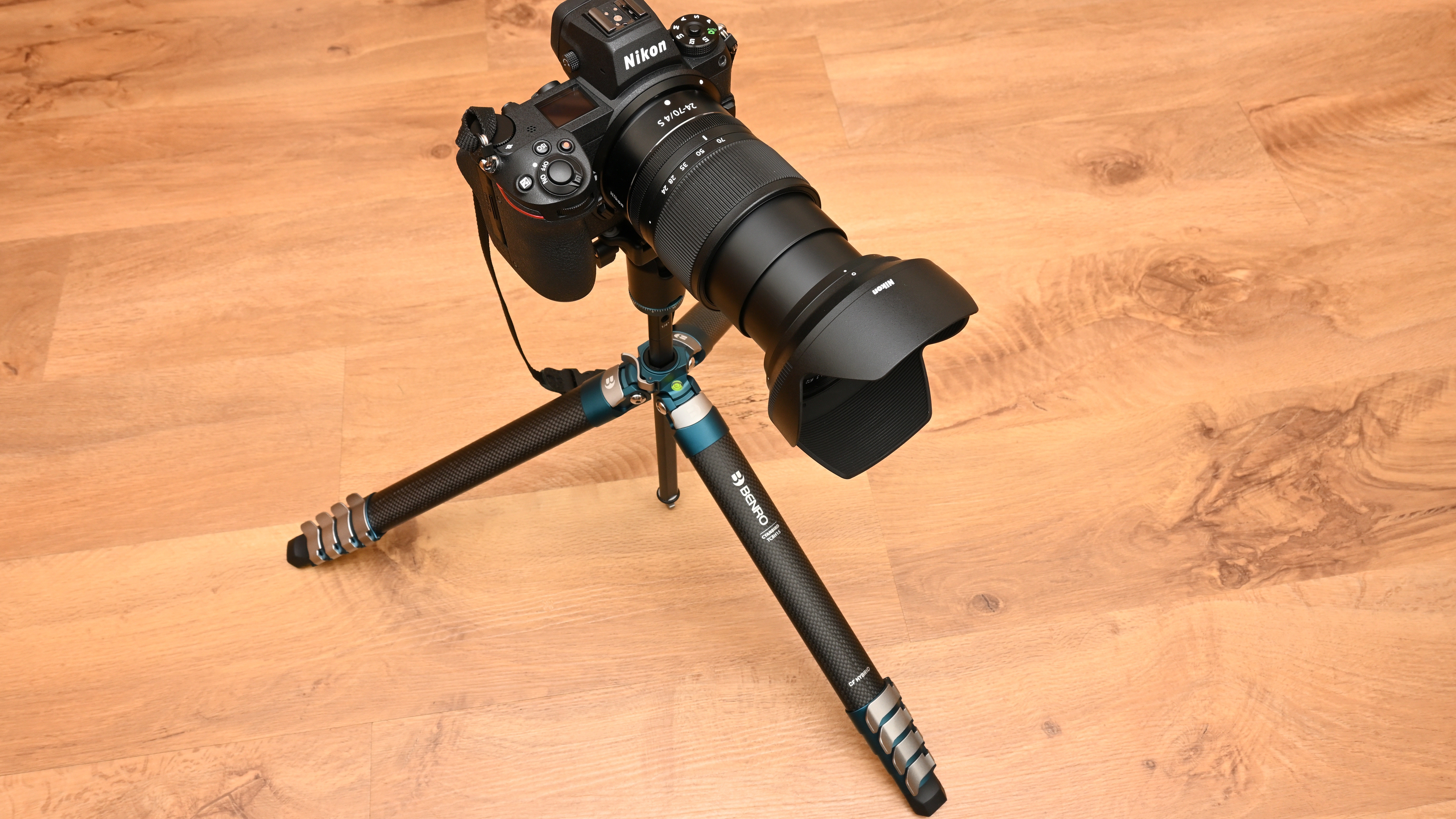
The flip-locks work a treat, being speedy and simple to use yet clamping very firmly. The design makes it easy to loosen or fasten all the clamps of each leg with a single hand gesture when the legs are at their shortest configuration.
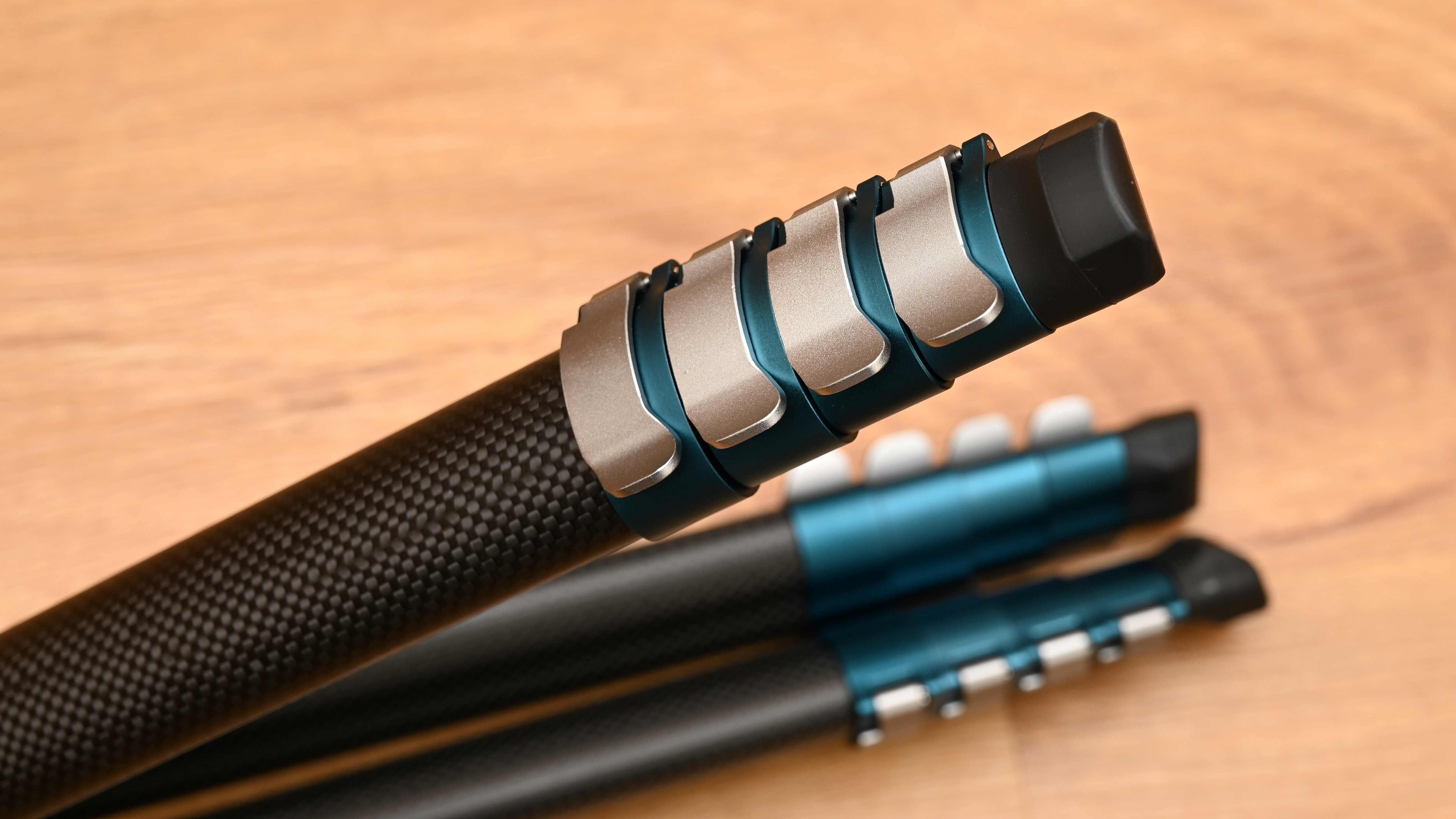
The locking mechanism for the three-position multi-angle legs is similarly simple to operate, with a particularly intuitive push-pull design. Unlike some tripods, you can’t detach one of the legs and combine it with the center column to use as a monopod, but that’s not uncommon with relatively lightweight travel tripods.
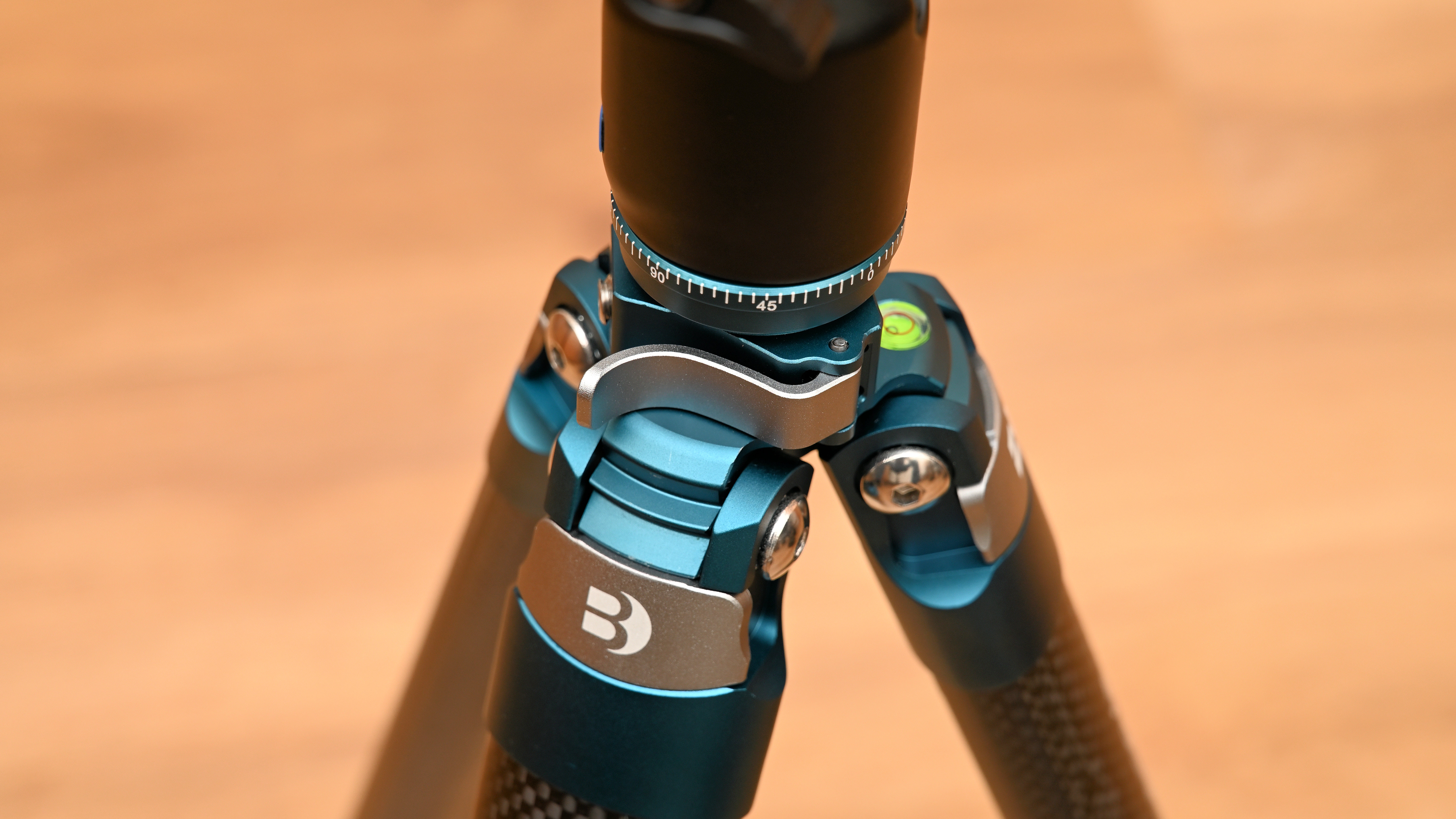
The head lacks an independent friction adjustment knob but that’s also fairly common in small travel tripods with downsized ball heads. Even so, there’s good feedback when progressively loosening the main locking lever, with friction gradually becoming less as you unscrew it. The range of movement is comprehensive and the separate panning lock works well for taking a sequence of shots for stitching into a panorama, as well as for shooting video.
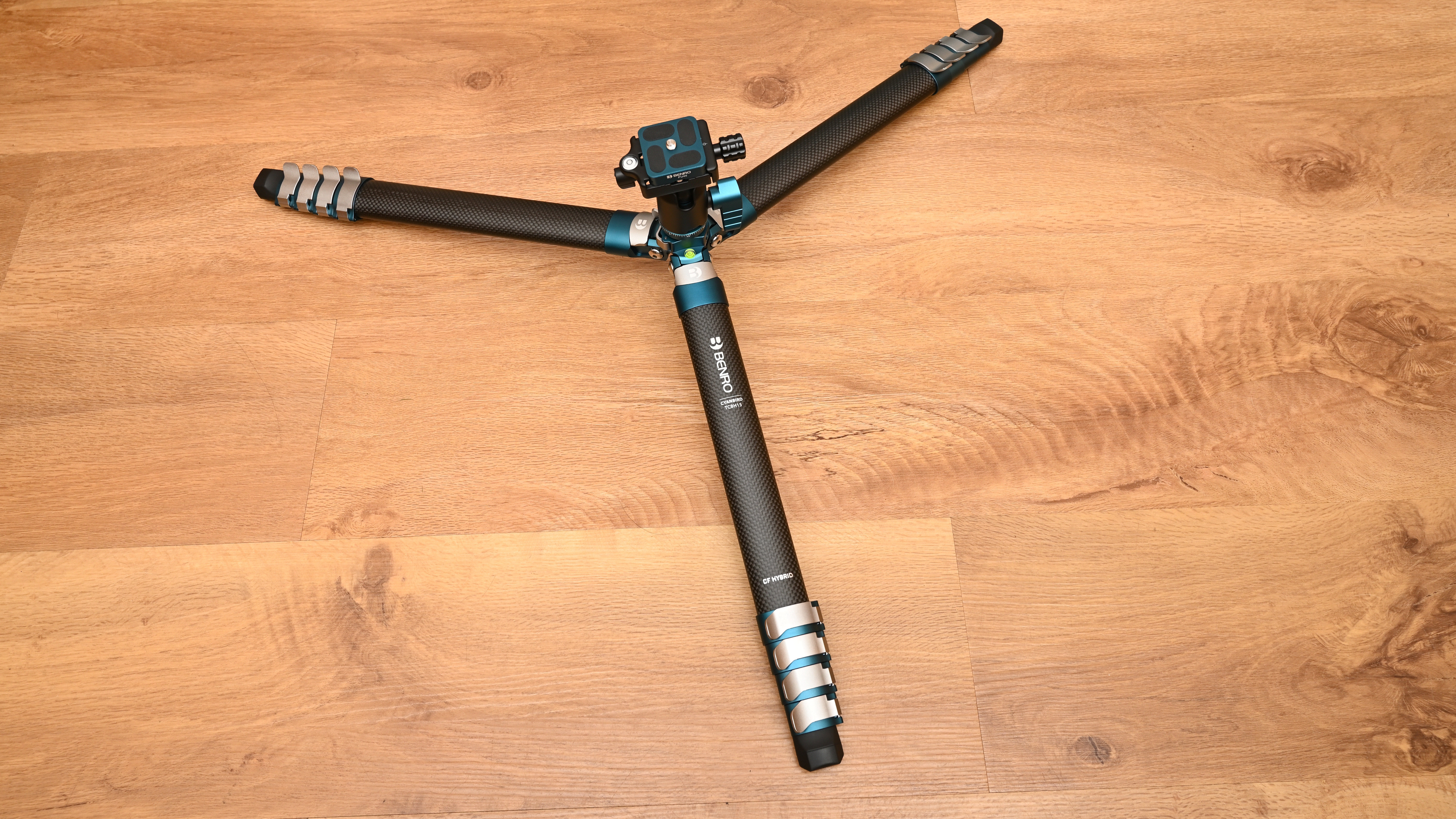
Removing the center column enables ultra-low-level shooting and you can also invert the center column for shooting at ground level with the camera inverted.

Overall performance is very impressive, making the Benro Cyanbird an excellent travel companion. It’s also very good value at the price, especially compared with the competing Peak Design Travel Tripod.
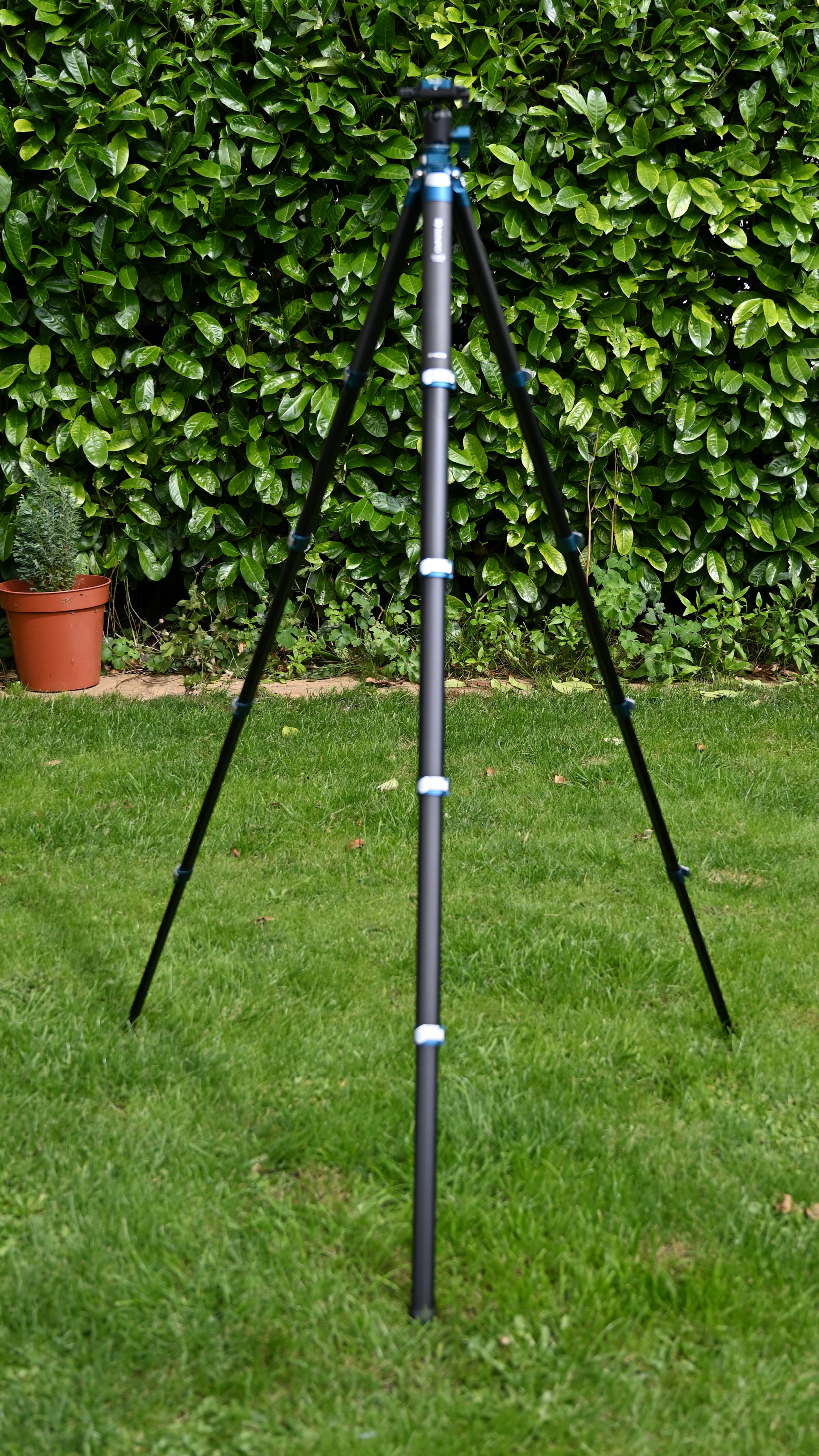
Verdict
Most travel tripods these days have swing-up legs so that the feet can encircle the head to reduce stowage size. The downside is that they take longer to set up for shooting and to fold down afterwards. The Benro Cyanbird takes a different approach, with arch-profile legs to ensure a snug fit with no wasted space. The hybrid design with a mix of carbon fiber and aluminum leg sections, and ocean blue magnesium alloy castings is very easy on the eye, and the 1.05kg (2.31lbs) weight is very easy on the back. Although compact and lightweight, it’s very versatile and gives sturdy support, making it a smart buy at the price.
Read more: check out our picks for the best tripod for photography, or if you are looking for something more specific you can find our guides for the best travel tripod or best carbon fiber tripod.
Matthew Richards is a photographer and journalist who has spent years using and reviewing all manner of photo gear. He is Digital Camera World's principal lens reviewer – and has tested more primes and zooms than most people have had hot dinners!
His expertise with equipment doesn’t end there, though. He is also an encyclopedia when it comes to all manner of cameras, camera holsters and bags, flashguns, tripods and heads, printers, papers and inks, and just about anything imaging-related.
In an earlier life he was a broadcast engineer at the BBC, as well as a former editor of PC Guide.
